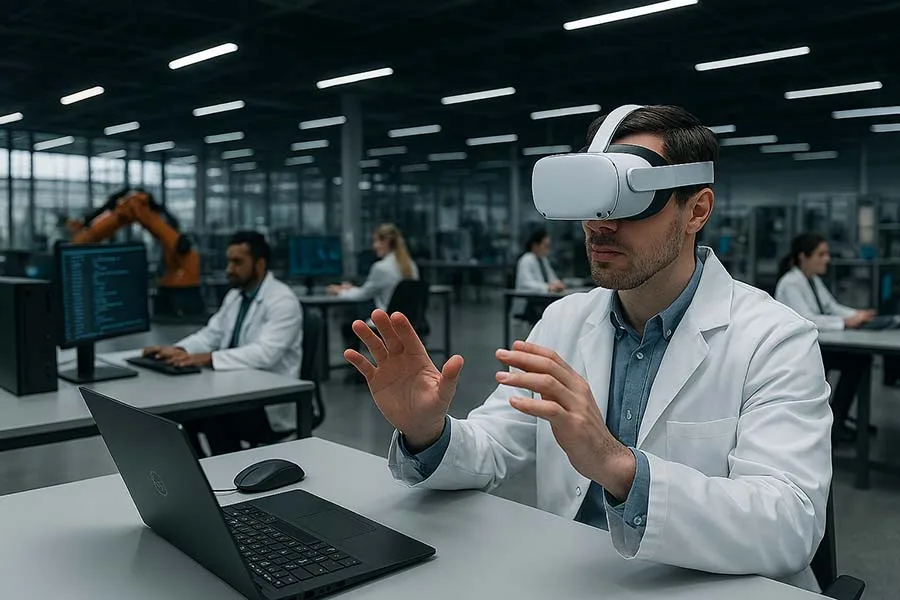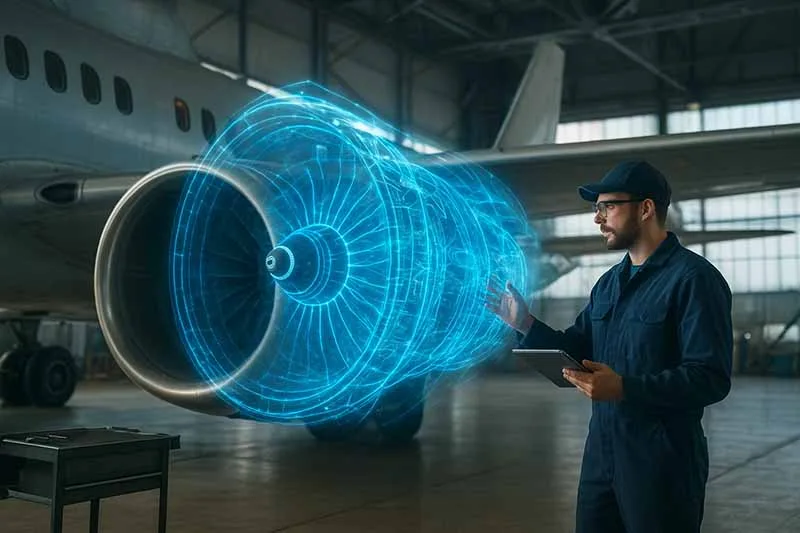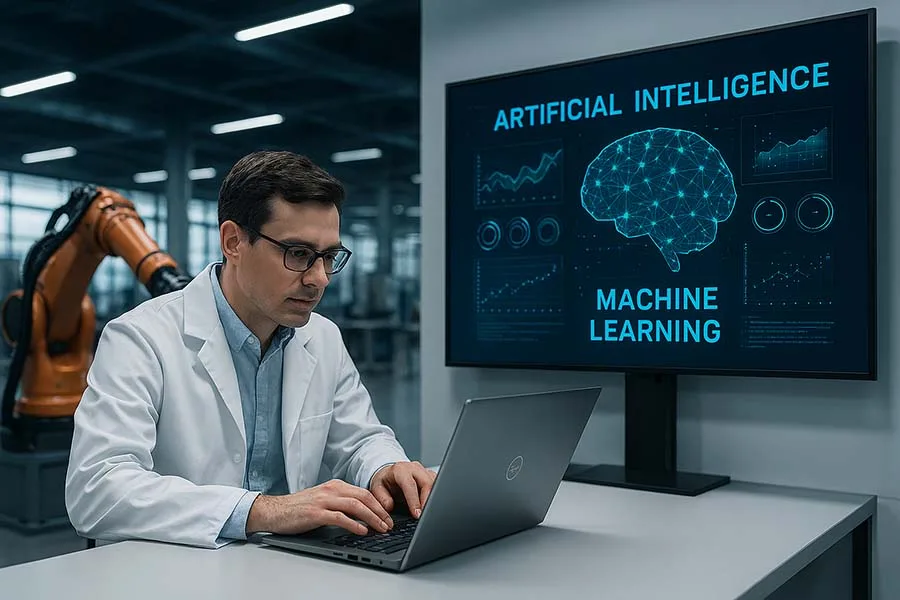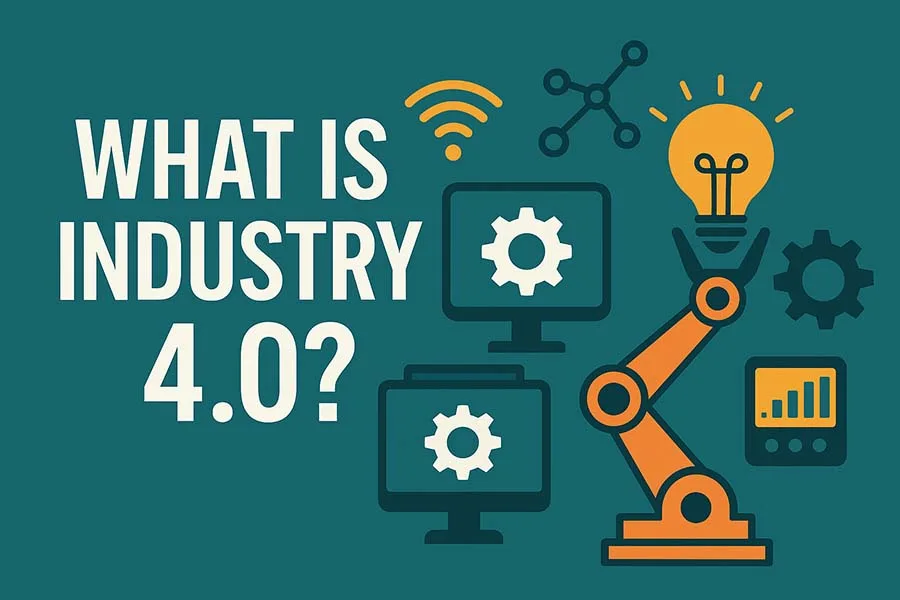Introduction: Bridging Humans and Machines
The future of manufacturing isn’t just automated—it’s immersive. Augmented reality (AR) and virtual reality (VR) are redefining how humans interact with machines, processes, and data. By overlaying digital information onto the physical world (AR) or creating fully virtual environments (VR), these technologies enhance training, maintenance, design, and collaboration.
In this article, we’ll explore the role of AR and VR in industry, their benefits, real-world applications, challenges, and future trends shaping the human-tech interface in smart manufacturing.
Understanding AR and VR
- Augmented Reality (AR): Enhances the real-world environment by overlaying digital information such as instructions, schematics, or alerts. Users see the real world with digital enhancements.
- Virtual Reality (VR): Immerses users in a fully virtual environment where they can interact with digital objects, simulations, and processes.
Both technologies bridge the gap between humans and machines, enabling safer, faster, and more efficient operations.
Why AR and VR Matter in Manufacturing
- Enhanced Training: Workers can practice complex tasks in virtual environments without risk.
- Remote Assistance: Experts can guide on-site staff using AR overlays in real time.
- Design and Prototyping: Engineers test products virtually before physical production.
- Operational Efficiency: AR displays can show real-time machine data and maintenance instructions.
- Collaboration: Teams can visualize complex systems together, even remotely.
Lesser-known fact: Boeing uses AR glasses for wiring harness assembly, reducing errors by 90% and speeding up work by 25%.
Core Technologies Behind AR and VR
- Wearable Devices: Headsets, smart glasses, gloves, and haptic devices enable interaction.
- 3D Modeling & Simulation Software: Creates realistic virtual environments and digital overlays.
- IoT Integration: Feeds real-time sensor data into AR/VR systems.
- AI Assistance: Enhances AR/VR experiences with predictive guidance and error detection.
- Cloud Computing: Handles complex rendering, simulations, and collaborative experiences.
Real-World Applications
1. Training & Skill Development
- VR simulations: Employees practice complex or hazardous tasks safely.
- Example: Ford uses VR for assembly training, allowing new hires to learn in virtual environments before touching physical cars.
2. Maintenance & Repair
- AR-guided instructions: Technicians receive step-by-step overlays while working on machines.
- Example: GE Field Service uses AR headsets for remote turbine maintenance, reducing downtime.
3. Product Design & Prototyping
- Virtual testing: Engineers visualize designs and simulate performance before production.
- Example: Airbus uses VR to design cabin layouts, allowing virtual walkthroughs before construction.
4. Remote Collaboration
- Virtual meetings in 3D environments: Teams interact with digital prototypes and models.
- Example: Siemens enables engineers across continents to inspect machinery in VR collaboratively.
5. Safety & Compliance
- Risk-free simulations: Workers practice emergency scenarios or equipment handling virtually.
- Example: Oil and gas companies train staff in VR for hazardous environments without exposure to danger.
Challenges and Considerations
- High initial costs: Hardware, software, and 3D modeling can be expensive.
- Integration complexity: AR/VR must work seamlessly with existing systems and IoT sensors.
- User adaptation: Workers need training to adopt immersive interfaces effectively.
- Data security: Remote AR/VR applications can be vulnerable to cyber risks.
- Technical limitations: Latency, field-of-view, and device ergonomics affect usability.
Future Trends in AR and VR
- AR glasses in everyday operations: More compact and user-friendly devices for real-time guidance.
- VR for virtual commissioning: Entire production lines simulated before installation.
- AI-enhanced AR: Predictive overlays suggest next steps or detect anomalies automatically.
- Mixed Reality (MR): Blending AR and VR for seamless interaction between real and virtual worlds.
- Remote industrial training at scale: Global workforce trained virtually, reducing travel costs and downtime.
Fun fact: Some factories now use AR to highlight optimal hand positions and safety zones in real time, making ergonomics and safety proactive rather than reactive.
Augmented Reality (AR) and Virtual Reality (VR) FAQ
Further Read
- Core Foundations of Industry 4.0: The Tech Stack Explained
- Industrial Internet of Things (IIoT): Connecting Machines, Data, and People
- Digital Twin Technology: From Concept to Real-World Applications
- Robotics and Automation: The Heart of Smart Manufacturing
- Artificial Intelligence (AI) and Machine Learning: Smarter Manufacturing
- Augmented Reality (AR) and Virtual Reality (VR): The Human-Tech Interface
- Data Analytics and Cloud Computing in Industry 4.0
- Cybersecurity in Industry 4.0: Protecting the Smart Factory
- Integration and Interoperability in Industry 4.0
- Benefits of Understanding the Core Foundations: People, Processes, and Technology
- Challenges and Barriers in Industry 4.0: Overcoming the Roadblocks to Smart Manufacturing
- The Future of Manufacturing: Towards Industry 5.0
Conclusion
AR and VR are transforming the human-tech interface in manufacturing. They enable safer, faster, and more intelligent operations while bridging gaps between physical and digital worlds. From training and maintenance to design and collaboration, immersive technologies are empowering workers and managers alike.
How is your company integrating AR or VR into operations? Share your experiences and questions in the comments below!





